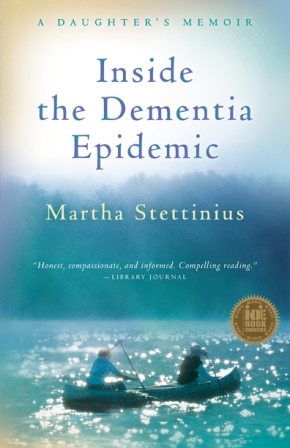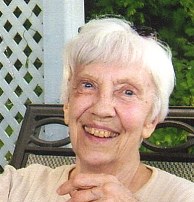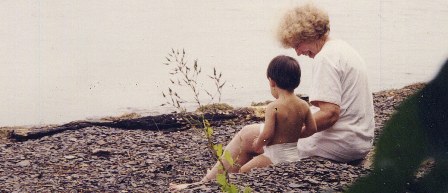Research and Public Policy on Dementia or Caregiving
National Plan to Address Alzheimer's Disease: 2014 Update, U.S. Department of Health and Human Services
The first National Plan to Address Alzheimer’s Disease was released on May 15, 2012, following the Obama Administration’s investment in Alzheimer’s research, provider education, and awareness in February 2012. This report highlights some initiatives and scientific findings since the last update in June 2013.
Long-Term Care: Managing Our Future: 2014 Mother's Day Report, OWL, May 2014.
OWL—the voice of women over 40—is the only national organization that focuses solely on issues affecting women as they age: issues like economic security, access to affordable health care and an enhanced quality of life. This report looks at long-term care, an issue that has implications not only for families and individuals, but for our nation’s economic health.
Family CaregivNers Providing Complex Chronic Care to Their Spouses, AARP Public Policy Institute and the United Hospital Fund, April 2014
According to this national survey of family caregivers, spouses and partners "are less likely [than adult children and other caregivers] to receive support from family and friends, and are far less likely to have home visits from health care professionals and aides." The authors of the study conclude that "efforts to reduce isolation and stress, as well as targeted training and support, are needed to protect the health and well-being of both partners."
2014 Alzheimer's Disease Facts and Figures (including a Special Report on Women and Alzheimer's Disease," Alzheimer's Association
"Women are at the epicenter of the Alzheimer's crisis."
Feelings of Loneliness, but Not Social Isolation, Predict Dementia Onset: Results from the Amsterdam Study of the Elderly (AMSTEL), Journal of Neurology Neurosurgery & Psychiatry, December 2012
"Feeling lonely rather than being alone is associated with an increased risk of clinical dementia in later life and can be considered a major risk factor that, independently of vascular disease, depression and other confounding factors, deserves clinical attention."
Attitudes about Aging: A Global Perspective, Pew Research Center, January 2014.
"In a rapidly graying world, Japanese are worried, Americans aren't." This report examines global public opinion on the challenges posed by aging populations for countries and for respondents personally. The Pew Research Center surveys were conducted in 21 countries from March 3 to April 21, 2013, and totaled 22,425 respondents. People were asked for their opinions on whether aging posed a problem for their country, whether they anticipated having an adequate standard of living in their old age, and who among themselves, their families, or their governments should bear the greatest responsibility for the well-being of the elderly.
Family and Retirement: The Elephant in the Room, A Merrill Lynch Retirement Study, conducted in partnership with Age Wave, August 2013.
Sixty-two percent of people age 50 and older have provided financial assistance to family members during the last five years. However, the vast majority have never budgeted or prepared for providing such support. This study explores American's generosity toward family, as well as the importance of factoring financial support and care for loved ones into retirement planning and one's own long-term financial security.
Caregivers in Crisis: New York State Must Act, AARP New York, the Council of Senior Centers and Services of NC, NYS Caregiving and Respite Coalition, 11/21/13
I think that the policy recommendations made in this paper by AARP New York, the Council of Senior Centers and Services of New York City, Inc., and the New York State Caregiving and Respite Coalition are excellent, and needed nationwide.
World Alzheimer Report 2013 "Journey of Caring: An Analysis of Long-term Care for Dementia"
As the world population ages, the traditional system of “informal” care by family, friends, and community will require much greater support. Globally, 13% of people aged 60 or over require long-term care. Between 2010 and 2050, the total number of older people with care needs will nearly treble from 101 to 277 million.
Family Caregivers are Wired for Health, Pew Research Center, 6/20/13
Four in ten adults in the U.S. are caring for an adult or child with significant health issues, up from 30% in 2010. Caring for a loved one is an activity that cuts across most demographic groups, but is especially prevalent among adults ages 30 to 64, a group traditionally still in the workforce.
Caregivers are highly engaged in the pursuit of health information, support, care, and advice, both online and offline, and do many health-related activities at higher levels than non-caregivers.
Dementia Care Cost is Projected to Double by 2040, New York Times article, 4/4/13
"The most rigorous study to date of how much it costs to care for Americans with dementia found that the financial burden is at least as high as that of heart disease or cancer, and is probably higher... The research, led by an economist at the RAND Corporation, financed by the federal government, and published Wednesday in The New England Journal of Medicine, provides the most reliable basis yet for measuring the scale of the problem."
Appropriate Use Criteria for Amyloid PET: A report of the Amyloid Imaging Task Force, the Society of Nuclear Medicine and Molecular Imaging, and the Alzheimer’s Association
Can new PET scans diagnose Alzheimer's disease? The Alzheimer's Association says that "although there are potential benefits, amyloid PET results do not constitute and are not equivalent to a clinical diagnosis of Alzheimer's disease dementia. Imaging is only one tool among many that clinicians should use judiciously to manage patients, and amyloid PET imaging does not substitute for a careful history and examination."
Family Caregiving and Transitional Care: A Critical Review, Family Caregiver Alliance
An examination of the often ignored--yet absolutely essential--role of caregiving families as patients transition from one healthcare setting to another, for example discharge from hospital to home or hospital to rehab facility. October 2012
A Picture of Higher-Burden Caregiving: Caregivers of Medicare Beneficiaries with Complex Health Care Needs, National Family Caregivers Association, Care Improvement Plus, and UnitedHealthcare
Survey focuses on people caring for Medicare beneficiaries with complex health care needs, and underscores the growing challenges caregivers face as the nation's Medicare population grows.
Home Alone: Family Caregivers Providing Complex Chronic Care, AARP
The role of family caregivers has dramatically expanded to include performing medical/nursing tasks of the kind and complexity once provided only in hospitals. To document this major shift, the AARP Public Policy Institute and the United Hospital Fund undertook the first nationally representative population-based online survey of 1,677 family caregivers to determine what medical/nursing tasks they perform. October 2012
World Alzheimer's Report 2012: Overcoming the Stigma of Dementia, Alzheimer's Disease International
Shares results from a worldwide survey conducted with people with dementia and carers on their personal experiences of stigma. The report provides information on stigma and dementia, highlights best practices in the field of dementia, and makes recommendations which could help reduce stigma. Sept. 2012
2012 Alzheimer's Disease Facts and Figures, Alzheimer's Association.
Includes "definitions of different types of dementia... prevalance, mortality, caregiving, and use and costs of care and services." Also includes a special report on "People with Alzheimer's Disease and Other Dementias Who Live Alone."
The United States of Aging, National Council of Aging, UnitedHealthcare, USA TODAY.
Survey of 2,250 U.S. adults aged 60 or older that examined seniors’ outlook and preparedness for aging, and their community’s ability to meet their needs as they age. June 2012
The Coming Epidemic of Dementia and How It can be Diagnosed, Treated, and Prevented
In this video, Stanford neuroscientist Frank Longo, MD, PhD, discusses the coming dementia epidemic and why there is reason to be optimistic. In his talk, Longo describes what happens in the brain when Alzheimer’s develops, advances in treating the disease and how exercise, diet and brain exercises may slow, or prevent, cognitive decline. May 2012.
Women and Alzheimer's Disease: The Caregiver's Crisis
The Working Mother Research Institute, with input from the Alzheimer's Association, surveyed nearly 2,500 women, including more than 1,200 who have cared for a loved one with Alzheimer's, to get a clear picture of how the responsibility of caregiving affects their emotional, financial and work lives, as well as their families. June 2012
United States Senate Commission on Long-term Care Report to Congress
Recommendations on how to integrate and fund the American system of long-term care. The report addressed four main areas: Service Delivery, Workforce, Finance, and formation of a National Advisory Committee on Long Term Services and Supports (LTSS). Note that 5 of the 15 members of the Commission were concerned enough about the lack of public funding for long-term care services that they wrote their own, alternative report. September 2013
Fact Sheet: Understanding the Impact of Caregiving on Work
Lynn Feinberg and Rita Choula, AARP Public Policy Institute
The number of workers with eldercare responsibilities is on the rise. This trend highlights the need to better understand the impact of family caregiving on work, and how working caregivers can better manage their work and caregiving responsibilities.
Ageing in the Twenty-First Century: A Celebration and a Challenge
UNFPA and HelpAge International
This landmark publication, representing a collaboration of over 20 United Nations entities and major international organizations working in the field of ageing, reviews policies and action taken by governments and other stakeholders since the Second World Assembly on Ageing in 2002. In addition to providing many inspiring examples of innovative programmes that address population ageing and the concerns of older persons, the report captures the voices of some 1300 older persons themselves.
Protecting Family Caregivers from Employment Discrimination
AARP Public Policy Institute
The first in a series of AARP public policy papers, it defines "family responsibilities discrimination," describes the kinds of discrimination encountered by workers who are caring for a family member, and makes policy recommendations. August 2012
"National Plan to Address Alzheimer's Disease," U.S. Department of Health and Human Services, May 15, 2012.
The Plan establishes five ambitious goals to both prevent future cases of Alzheimer's disease and to better meet the needs of the millions of American families currently facing this disease:
* Prevent and Effectively Treat Alzheimer's Disease by
2025.
* Optimize Care Quality and Efficiency.
* Expand Supports for People with Alzheimer's Disease
and Their Families.
* Enhance Public Awareness and Engagement.
* Track Progress and Drive Improvement.
"Dementia: A Public Health Policy 2012 Report," World Health Organization and Alzheimer's Disease International.
The purpose of this report is to raise awareness of dementia as a public health priority, to articulate a public health approach and to advocate for action at international and national levels based on the principles of evidence, equity, inclusion and integration.
"No Time to Waste: Recommendations for an Integrated National Plan to Overcome Alzheimer's Disease," Alzheimer's Foundation of America, October 2011
A short publication about dementia research, care and services. The Alzheimer's Foundation of America is a coalition of over 1,600 organizations, and a major advocate of the National Alzheimer's Project Act and a participant on the National Advisory Council on Alzheimer's Research, Care and Services.
"Alzheimer's From the Frontlines: Challenges a National Alzheimer's Plan Must Address," Alzheimer's Association, November, 2011
A summary of the public input of 43,000 Americans, gathered at forums across the country from July to October, 2011, as part of the National Alzheimer's Project Act.
Valuing the Invaluable: 2011 Update: The Growing Contributions and Costs of Family Caregiving,
AARP Public Policy Institute.
"The estimated economic value of [the] unpaid contributions [of family caregivers] was approximately $450 billion in 2009, up from an estimated $375 billion in 2007. The report...explains the contributions of family caregivers, details the costs and consequences of providing family care, and provides policy recommendations to better support caregiving families."


















 National Alzheimer's Plan
National Alzheimer's Plan